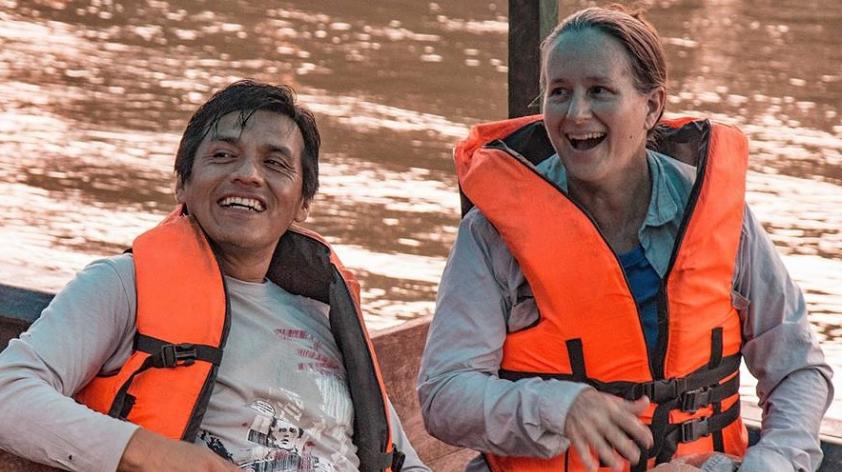
A Cashu Nut Returns!
Generally, when somebody calls you a ‘nut,’ it’s not exactly flattering. When you’re called a ‘Cashu Nut’, it means the same thing: you’re crazy. But, more specifically, you’re crazy about Cocha Cashu and it’s a compliment. If you’re a Cashu Nut, you have spent time - conducted research or worked - at the Cocha Cashu Biological Research Station, in Manu National Park, Peru. You have run the gauntlet and been deemed worthy of joining the ranks of the fortunate few.
Carol Mitchell is a Cashu Nut. She is a native of the state of California, completed her Bachelor’s degree in Zoology at the University of California in Davis, and received a Masters and Doctorate in Ecology and Evolutionary Biology in Princeton University in New Jersey. Her theme? The ecology and behavior of squirrel monkeys (Saimiri boliviensis) at Cocha Cashu, with Dr. John Terborgh as academic assessor. Carol chose Cocha Cashu as the site for her primate research because she wanted to study the social behavior and ecology of monkeys in an ecosystem that was unaffected by hunters. Cocha Cashu provided that unique opportunity.
Between 1983 and 2003, she participated in studies of the ecology of primates, small mammal biodiversity, impacts of hunting by indigenous people in protected areas, and impacts of hydrocarbon exploration in pristine tropical forest areas in southeastern Peru. Carol now works as sub-Director of Sciences at the Centre of Natural Resources in Everglades National Park in the South of Florida.
Earlier this year and in view of her expertise and Cashu history, we invited Carol to visit the Station in late September as a guest instructor of our annual Tropical Ecology and Field Techniques Course. This course plunges twelve Peruvian graduate students into the heart of the rainforest and trains them to complete individual research projects within a period of three months. Since its start in 2013, the course is funded by the Wallace Research Foundation and a private donor and has rapidly become a source of great pride for the Station.
On her return to ‘civilization’, we took the opportunity to talk to Carol about her recent experiences at Cashu: “It was wonderful!” she said. “The day after we arrived, a harpy eagle perched and stayed in a tree just across the lake for more than four hours. The otters spent three days on the lake. Every day we saw monkeys. I know some aspects in the Park are changing, and that is to be expected. But I was really happy to see the station is super-improved, and that the area is still very much protected.”
Asked how SDZG-Peru is doing regarding management of the Station, Carol replied: “Very well. The new buildings (house and kitchen) are great, and the tent sites are much improved. There is a constant emphasis on sustainability, with waste and energy management being the top issues. And I can’t even begin to describe the food. Unbelievable.”
But Carol emphasized the need to get the historical data from Cashu, and make at least some of it available to returning or new researchers. “That’s one of the great strengths of the station – the long history of research,” she said. A second priority would be to increase the communication and connectivity of work with other stations in the area, and to consider Cashu a critical element in the research needed to help manage not only the lowland areas of Manu National Park, but also the larger protected ecosystem between Cusco, Madre de Dios, and Ucayali.
Carol was much impressed by our Tropical Ecology course and the twelve Peruvian participants. “The course has some excellent basic goals – to get students familiar with field research, to make sure that students not only have the science information but also understand that communication through writing and art is critical to conservation science, and to make sure that students are able to follow the scientific method from identification of a question through development of a hypothesis and research design. This last is super important and needs to be continued.”
In Carol’s opinion, Cocha Cashu, and the most highly protected area of Manu National Park, is THE place to study ecosystem resilience, providing information on the costs and benefits of maintaining a complete web of life, from the physical components through the biological aspects of the system.
Asked what her most important advice would be for future Cocha Cashu researchers, she didn’t hesitate: “Just get there. Undertake a one month trip at first, to understand the place and what you will need to truly develop your work. Then plan for longer term. Check it out and you will find a million things to work on.”













